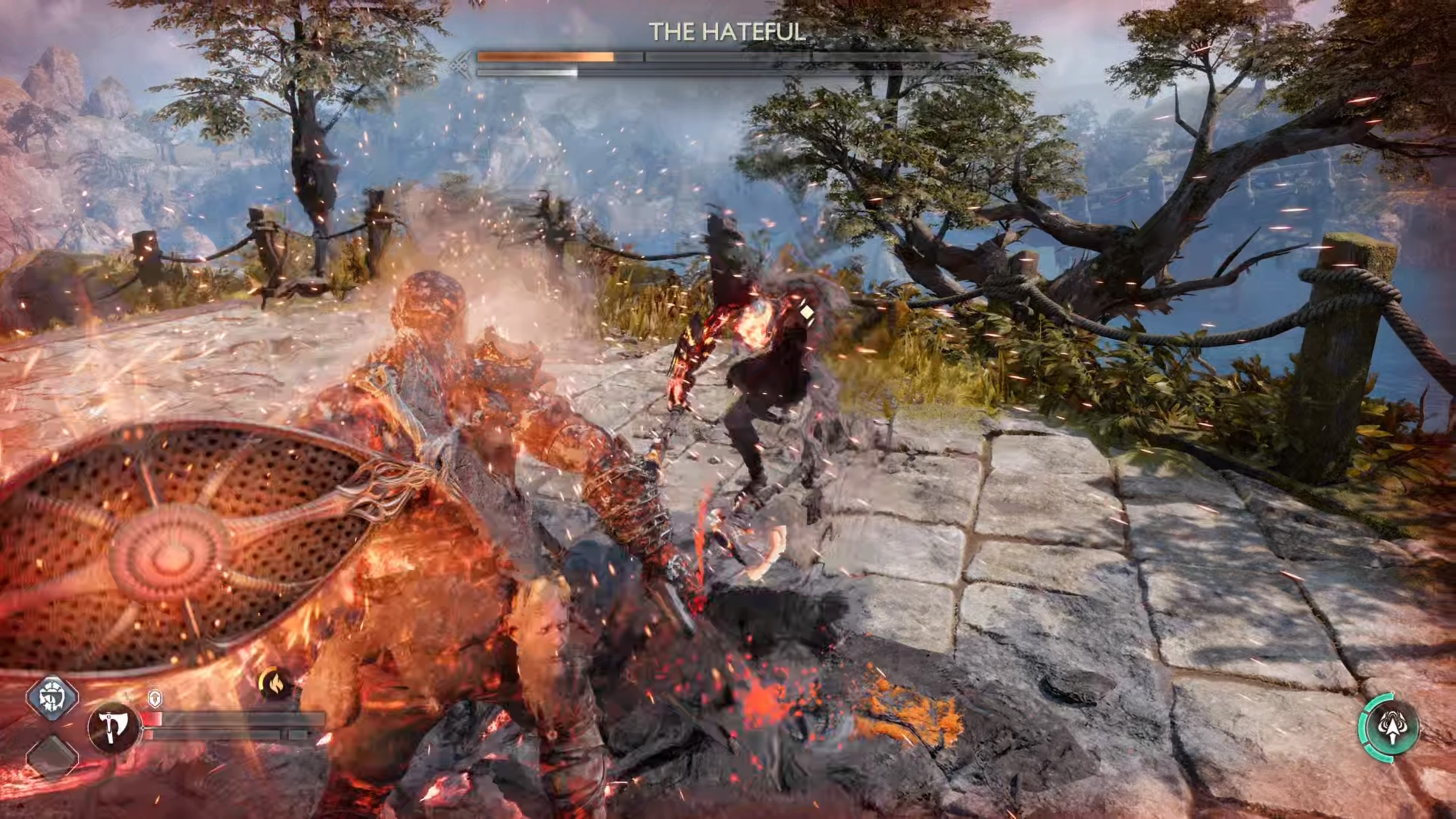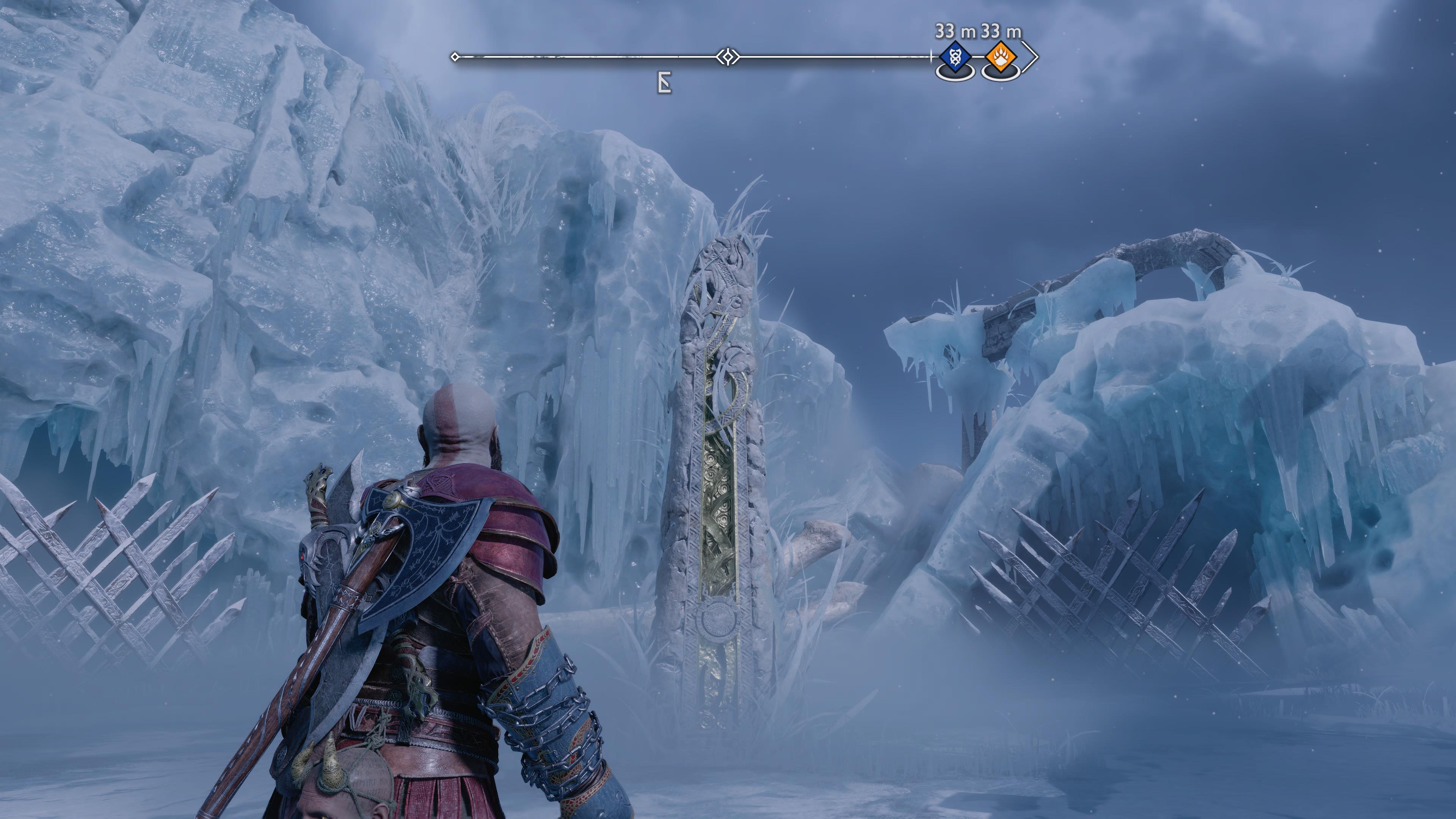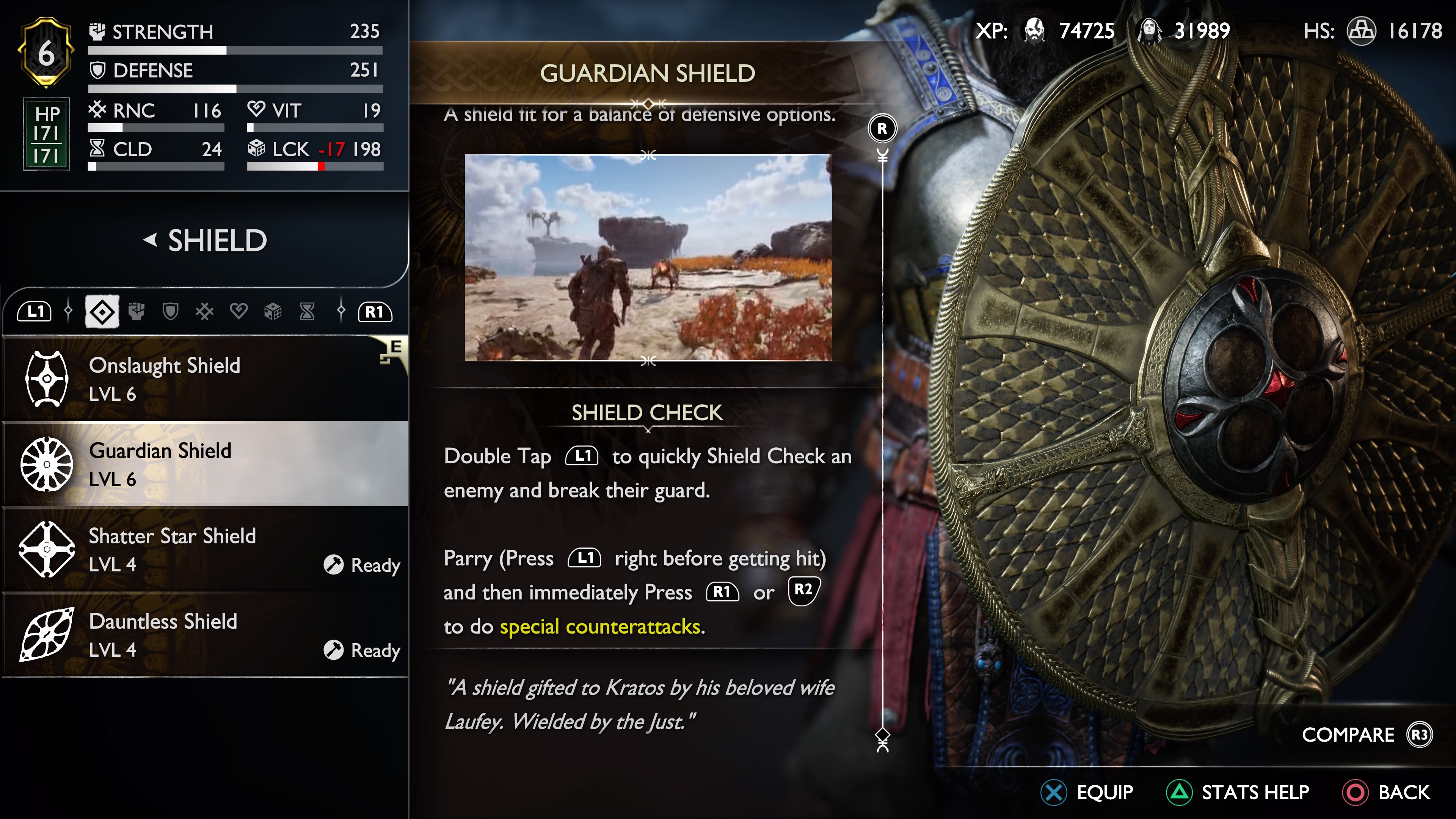Early on in God of War Ragnarok, there are few ways to make the game significantly easier. The one mechanic you have in your arsenal that can turn the tide of battle is the parry. With precise timing and specific shields, a successful parry nullifies most attacks and can stagger any enemy in the game.
When you reach the endgame of God of War: Ragnarok, there are lots of ways to trivialize the difficulty. You can build into survivability or massive damage, making what would otherwise be impossible fights incredibly simple. Early on, not so much. We’ll go over how to parry in this guide, the best places to practice, and which shield you should use.
Parrying Explained
The actual mechanics of parrying in God of War: Ragnarok are simple. When specific attacks are about to hit Kratos, press L1; if you do it right, Kratos will deflect the strike with his arm swung wide to the left. You’ll also hear a loud, low clang sound, and the game will momentarily slow down, giving you a chance for additional counterattacks.
The catch with parrying is every attack has different timing, and not all shields can do it. You have to check the shield’s description in the menu for its secondary ability. If it can parry, it will say so. Other shields have other useful abilities, but they’ll only be able to block, not counter, incoming attacks.
You’ll know you can parry an attack if the following is true: the attack has either no yellow circle around it, or it does. If the attack does not have a yellow circle, it can be blocked normally if you aren’t yet comfortable with the timing. Yellow circle attacks are guard crushes, and if they hit you, Kratos will be staggered for about a second and be open for any second or third hits.
In most cases, you have a larger parry window than you think, but it’s only about a half second. With a bit of practice, you’ll be able to parry slower attacks on reaction, even if you’ve never seen the move before. For regular attacks without a yellow circle, you can also do what’s called a setup parry: block the first hit in the combo, then immediately parry the second as it lands.
Guard crushes are riskier, as they tend to do more damage if you miss the parry window and shouldn’t be blocked. The window itself isn’t usually any smaller than a standard attack’s, but unless you’re confident you can land the parry, we recommend dodging these until you have the health to tank a few hits. Never try to parry a red circle attack. These are unblockable and should only be avoided or otherwise i-framed.
Where to Practice Parrying
Ideally, you’ll practice parrying as you play through the game, particularly on trash mobs you fight wherever you’re either in a story or side quest or are otherwise out exploring. The best way is to save early-game content for later so you can return to it with better gear and abilities to mitigate incoming damage.
For a more “controlled” environment, go to Niflheim when it becomes available midway through the campaign. The first area you unlock, The Raven Tree, is primarily a training arena where you fight an endless horde of various enemy types with no real consequence for failure. Summon some base-level Draugr or grim and practice the basics.
The Best Shield for Parrying
The best shield for parrying in God of War: Ragnarok is the Guardian Shield, the shield Kratos starts the game with. You lose access to it early on and are forced to use the Dauntless Shield in its stead if parrying is your goal.
The Guardian Shield is the best because the secondary R1 or R2 right bumper and trigger attacks can stagger enemies and return projectiles at the one that fired them. If you’re good at parrying and care less about consistent counterattacks, the Dauntless Shield’s empowered Shield Bash on a perfectly timed parry is quite nice. You have to be incredibly precise, and the Guardian Shield is easier to use overall.
That’s about everything you need to know about parrying in God of War: Ragnarok. It’s not an exact science, and it does take a bit of skill to pull off consistently, but it’s not the most difficult thing to do, either. There will be plenty of other God of War articles coming in the near future, so check our guides hub for more.










Published: Nov 13, 2022 8:00 AM UTC